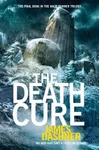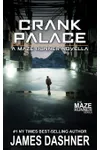Dive into the heart-pounding world of the Maze Runner series, where a group of teens battles a mysterious maze with no memory of their past! James Dashner’s dystopian saga blends pulse-pounding action, intricate mysteries, and deep themes of survival and identity, making it a standout in young adult sci-fi. Perfect for fans of thrilling adventures, this series keeps you guessing at every turn.
Centered on Thomas, a teenager dropped into a dangerous maze with other boys called Gladers, the story unravels secrets about their world and their purpose. With its gripping plot and relatable characters, Maze Runner has hooked readers since its debut. Ready to explore this unforgettable journey? Let’s break it down!
How Maze Runner Began
James Dashner, inspired by his love for sci-fi and dystopian tales, began crafting Maze Runner in the early 2000s. Drawing from influences like Lord of the Flies and The Hunger Games, he envisioned a story about teens facing extreme challenges in a controlled environment. Published in 2009, The Maze Runner was Dashner’s breakout hit, launching a series that captivated a global audience.
The concept of a maze as a metaphor for life’s uncertainties resonated with Dashner, who wanted to explore themes of resilience and teamwork. His background in finance before becoming a full-time writer gave him a unique perspective, grounding the series’ fantastical elements in raw human emotion.
The Heart of Maze Runner
The Maze Runner series spans five main books, with three core novels and two prequels. The first, The Maze Runner (2009), introduces Thomas and the Gladers as they navigate a deadly maze guarded by monstrous creatures called Grievers. In The Scorch Trials (2010), the survivors face a ravaged wasteland and new dangers. The Death Cure (2011) concludes the trilogy with shocking revelations about the maze’s creators. Prequels The Kill Order (2012) and The Fever Code (2016) delve into the world’s backstory.
The series tackles themes of survival, trust, and the cost of scientific ambition. Set in a dystopian future ravaged by a solar flare and a deadly virus, the maze serves as both a physical and psychological trap. Dashner’s fast-paced style, paired with vivid world-building, creates an immersive experience. The Gladers’ camaraderie and moral dilemmas add depth, making each book a rollercoaster of emotions.
What sets Maze Runner apart is its focus on collective problem-solving. Unlike many dystopian heroes, Thomas isn’t a lone savior; he relies on friends like Minho and Newt. This emphasis on teamwork, combined with twists that challenge perceptions of reality, keeps readers hooked.
Why Maze Runner Resonates
The Maze Runner series struck a chord with young adult readers, offering a fresh take on dystopian fiction during a boom in the genre. Its blend of high-stakes action and ethical questions about control and sacrifice appealed to fans of Divergent and The Hunger Games. The series’ success led to a popular film trilogy (2014–2018), expanding its reach.
Its lasting appeal lies in its relatability. The Gladers’ struggle to find purpose mirrors real-world challenges, resonating with teens and adults alike. Fan communities still thrive, discussing theories about the maze’s origins and the characters’ fates, proving the series’ enduring cultural impact.
- Publication Years: 2009–2016
- Number of Books: 5 main books
- Notable Recognition: New York Times bestselling series
Grab The Maze Runner and step into a world of danger, mystery, and unforgettable friendships. Your adventure awaits!






